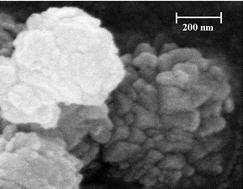Abstract
A new compound in the Cr–B–O system with the MIII3BO6 norbergite structure has been synthesized by a solid state reaction. Rietveld refinement of the powder X-ray diffraction pattern in the space group Pnma yielded unit cell parameters of a = 9.8552(2), b = 8.4007(2), c = 4.4138(1) Å. The compound is formed in highest purity using a hydrated chromium(III) sulfate precursor, which has the highest decomposition temperature of the reagents used in this synthesis. A reaction scheme is proposed to explain this observation. The electrochemical properties of this material as a negative electrode for lithium-ion batteries were investigated and found to be similar to those for the previously studied Fe3BO6, although the average Li-uptake potential was lowered to 1.0 V.


 Please wait while we load your content...
Please wait while we load your content...